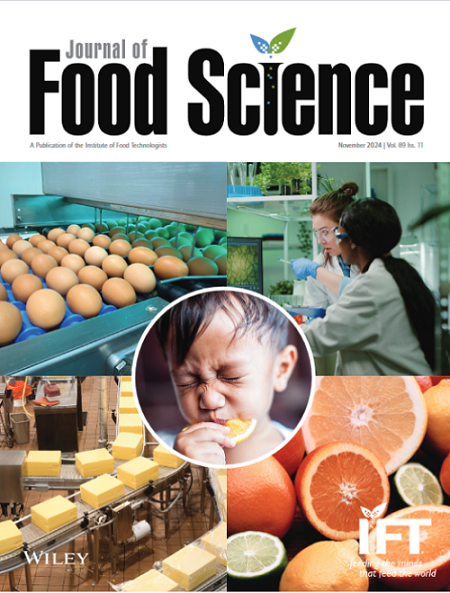Optimization of enzyme hydrolysis to improve functional and structural properties of microalgae protein extract
Abstract
This study aimed to optimize the hydrolysis conditions for converting bioactive peptides from the microalgae Scenedesmus obliquus isolated protein (SOIP) using pepsin. The SOIP was first characterized using sodium dodecyl-sulfate polyacrylamide gel electrophoresis (SDS-PAGE) and high-performance liquid chromatography (HPLC) for amino acid profiles. Response surface methodology (RSM) with a central composite design (CCD) was then employed to determine the optimal hydrolysis parameters of enzyme concentration and time for pepsin. Hydrolysates were fractionated based on molecular weight and evaluated for antioxidant, emulsifying, fat binding, and foaming properties. Statistical analysis using RSM showed that both hydrolysis time and enzyme concentration positively influenced the yield of bioactive peptides. Peptides in the 5–10 kDa range demonstrated the highest antioxidant activity, while lower molecular weight peptides (<5 kDa) exhibited superior fat-binding and emulsifying properties. Overall, hydrolysis significantly enhanced the functional properties compared to the unhydrolyzed control. This study demonstrated that Scenedesmus obliquus is a promising source of bioactive peptides and defined optimized conditions for their enzymatic extraction using pepsin.
Practical Application
Scenedesmus obliquus shows promise as a source of bioactive peptides, aligning with the demand for sustainable food ingredients. Our research optimizes pepsin hydrolysis parameters, enhancing efficiency for industrial-scale peptide extraction. Peptides from Scenedesmus obliquus exhibit antioxidant, emulsifying, fat binding, and foaming properties, supporting their use in functional food development. These peptides offer opportunities for innovative, health-enhancing food formulations. Generally, microalgae-derived ingredients contribute to sustainable food production practices.

 求助内容:
求助内容: 应助结果提醒方式:
应助结果提醒方式:


